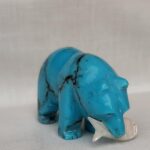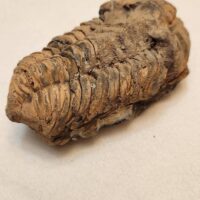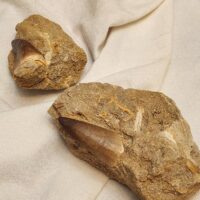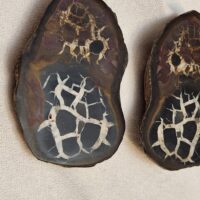Description
Septarian Nodule specimens are fossils wth a combination of yellow calcite, brown aragonite, grey limestone and white or clear barite. Formed on ancient sea beds, they are also called “mud balls” or “mud bubbles.” The minerals formed inside an air pocket leaving patterns. Between 50 to 70 millions years old, some are as valuable as pearls. Approximately 1″ X 1-1/2″ in size, each one looks a little bit different as nature made them.





Reviews
There are no reviews yet.